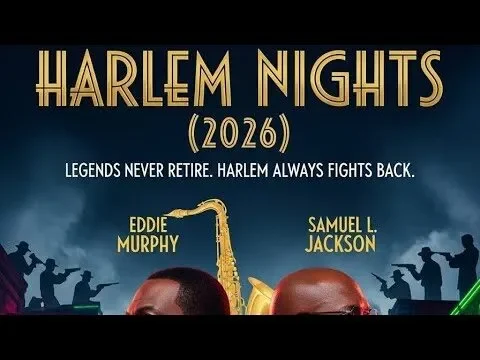The 2026 remake of Harlem Nights bursts onto the screen like a jazz trumpet in full swing — bold, soulful, and unapologetically alive. Set once again in 1930s Harlem, the film brings back the glamour and grit of the original but reimagines it with a modern cinematic rhythm. The story follows Sugar Ray Jr. (played by Jonathan Majors) as he inherits his father’s nightclub and struggles to protect it from rival gangs, crooked cops, and his own self-destructive ambition. From the first frame, the movie immerses you in a world of neon lights, smoky clubs, and sharp suits that scream danger and decadence. It’s a dazzling opening act that promises both chaos and class.

The film’s direction by Ryan Coogler gives Harlem Nights a modern heartbeat while staying loyal to the vintage charm of the 1930s. The pacing is slick, the dialogue crackles with rhythm, and every camera move feels choreographed like a dance. Coogler’s touch transforms the story into something deeper — not just about survival, but about legacy, loyalty, and the cost of power. The club scenes are hypnotic, with rich jazz numbers performed live, while moments of violence hit like sudden, haunting drumbeats. The blend of beauty and brutality defines the film’s pulse.

Jonathan Majors delivers one of his most commanding performances yet. His portrayal of Sugar Ray Jr. balances charm and volatility, a man who smiles like a star but burns inside like a fuse. Opposite him, Zendaya plays Ruby, a sultry singer whose voice melts the screen while hiding a storm of secrets. Their chemistry feels electric, full of longing and danger. Supporting roles from Mahershala Ali and Regina King round out the cast with depth and gravitas, each character carrying their own quiet heartbreak beneath the city’s glitter.

Visually, Harlem Nights (2026) is pure gold. The cinematography drenches every frame in deep ambers and moody blues, capturing the duality of Harlem — a city of dreams and deceit. Costume designer Ruth E. Carter crafts jaw-dropping outfits that tell stories of power, class, and rebellion with every fabric choice. The attention to period detail, from vintage cars to art deco interiors, makes the film feel like time travel done right. Yet, it never feels old-fashioned; instead, it radiates timeless cool.

By the time the credits roll, Harlem Nights (2026) leaves you both heartbroken and hypnotized. It’s not just a remake — it’s a resurrection. The film honors the legacy of the original Eddie Murphy classic while carving its own identity with depth, fire, and emotion. It’s a cinematic love letter to Harlem’s golden age and a fierce reminder that style means nothing without soul. This is a film that swings, bleeds, and burns bright — long after the final note fades.
